A tree that doesn’t leaf out in spring isn’t just late, it could possibly be dead. Certain trees leaf out later than others, some have disease, some may be stressed – there are many different reasons.
At Dragonetti Tree Removal, we assess hundreds of trees every year that fail to leaf, and we know the difference between a tree that has a delayed start and a lost cause. This guide will help you understand the problem, get an honest diagnosis, and decide what to do next.
Which Trees Leaf Out and When
Not all trees wake up at the same time. If you’re worried because your tree isn’t growing leaves yet, it helps to know when its species should be showing leaves and when. Some trees start in early April, others don’t begin until late May, and that’s completely normal.
- Silver Maple – One of the first to leaf, usually early to mid-April. If it hasn’t shown buds by then, there may be a problem.
- Norway Maple – Follows closely behind, leafing out by mid-to-late April. Slow to leaf could mean winter injury or disease.
- Flowering Cherry & Plum – These ornamentals often break dormancy early but are vulnerable to late frosts. If they started to grow and then stopped, frost damage is likely.
- Pin Oak – Begins around late April to early May. Don’t panic if it’s still bare in early May, oaks take their time.
- White Oak & Red Oak – These are very late starters, often not leafing until late May or even early June.
- Sycamore – Another late-leaver, typically doesn’t leaf out until late May. If you have one near your house, patience is key.
- Black Walnut – Known for delayed leafing, often waiting until the end of May. No cause for concern unless branches fail the scratch test.
- Tulip Tree – Grows fast but waits until late spring to show leaves. Common in suburban yards and often mistaken for dead.
- Callery Pear (Bradford) – Starts in early to mid-April. If it hasn’t leafed by now, check for fire blight or structural decline.
- Ash – Begins in mid-April, though many are declining due to the emerald ash borer. Sparse leafing or no leaves could signal infestation.
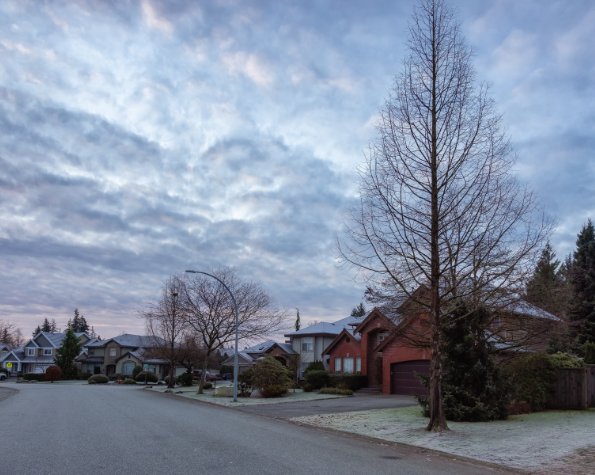
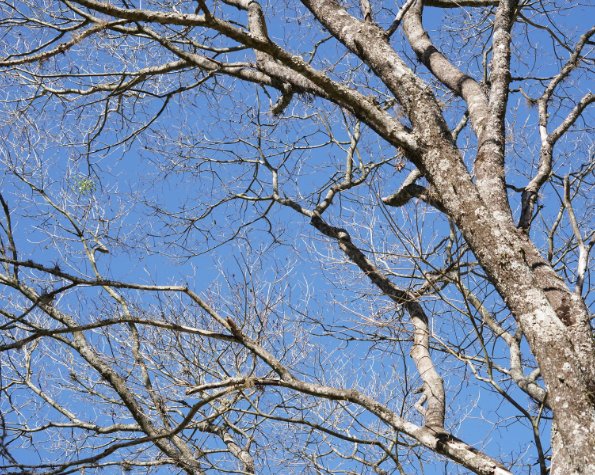
Is A Bare Tree Still Alive?
Not every bare tree is dead. But not every bare tree will recover. Trees do not stop leafing out for no reason. Though there are many different indicators, the main reason it’s not leafing out is that it’s dying.
The Scratch Test
A great way to check if your bare tree is still alive is to start with something called a scratch test. Take a small twig and scratch off some bark. If the tissue underneath is green and moist, the branch is alive. If it’s brown and dry, the branch is dead, indicating a tree in decline. Repeat on several limbs. If most come back dead, the tree itself is likely gone.
Check Tree Buds
Also, check the buds. They should be firm, not shriveled. Pick one and cut one open. If it’s green inside, there’s still a chance your tree is alive. If it’s brown and hollow, the tree is most likely dead.
When Did Your Tree Last Leaf Out
Also, consider the history of your tree. Did it leaf out last year? The year before? A tree that’s been slow to grow leaves for two springs in a row is unlikely to come back. Some trees, like oaks and sycamores, leaf out late, often not until late May. But if it’s a species that should be green by now and it’s not, the odds are against it.
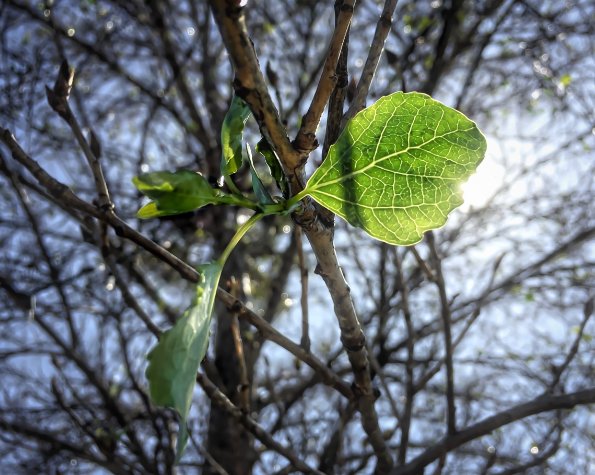
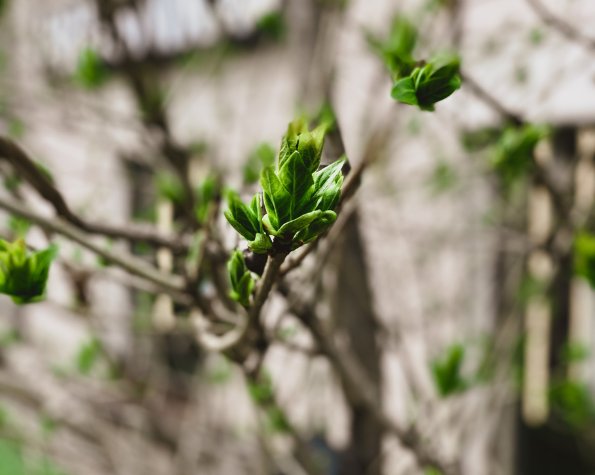
Signs Your Tree Is Struggling to Leaf Out
- Tree branches are shriveled or brittle
- No buds visible by mid-May
- Buds are dark, dry, or fall off when touched
- Scratch test shows brown, dry tissue
- Trunk is cracking or oozing sap
- Suckers are growing from base but not canopy
- Neighboring trees of the same type have already leafed out
- Leaves only grow at branch tips
- Visible root damage
- Tree leafed out last year but not this year
- Branches snap easily when bent
- Leaves started to grow but then died back
- One side of the tree is leafing, the other isn’t
- Fungal growth or mushrooms at the base
- Canopy looks thin or sparse compared to previous years
- Tree hasn’t leafed out for two springs in a row
- Leaves are smaller than normal
- Soil heaving around base
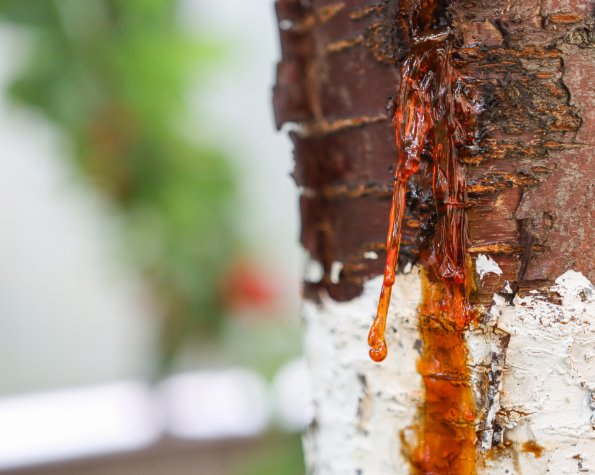
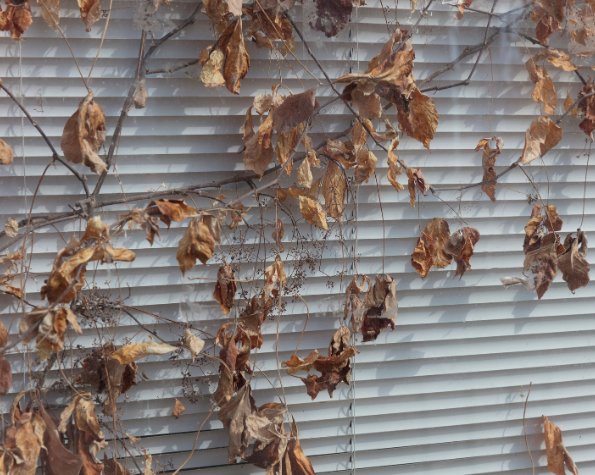
Your Options When a Tree Isn’t Growing Leaves
For trees that are alive but struggling, we recommend monitoring and light support. Mulch around the base to retain moisture and water deeply once a week if the soil is dry. Avoid pruning or fertilizing, it won’t help a dying tree and could make things worse. But if there’s no improvement by early June, it’s time to consider removal.
Trees that are dead, decayed, or infected with a disease like verticillium wilt, tree removal services are the responsible move.
FAQs
It depends on why it’s not leafing. Some trees go through a year without leaves and come back strong the next season, especially if they’re young and the roots are healthy. This can happen after a harsh winter or drought. But if there’s no sign of life (brown buds, brittle branches, dry tissue under the bark), then no, it won’t grow back.
Trees don’t just “take a year off” unless they have the energy reserves to do so. If the scratch test shows no green and the trunk is cracking or oozing, the tree is likely dead.
Sometimes! But only if it’s still alive. If the scratch test shows green under the bark and the buds are firm, the tree might recover with proper care.
Water deeply once a week if the soil is dry. Add mulch around the base to hold moisture. Avoid pruning or fertilizing, it won’t help a dying tree.
But if the tree has been slow to leaf for two springs in a row, or if the canopy is thinning, recovery is unlikely. At that point, removal is often safer than waiting for a collapse.
Yellow leaves early in the season can mean several things. It could be chlorosis, a lack of iron due to high soil pH, common in urban yards with compacted clay. It could also be stress from road salt, root damage, or poor drainage.
In some cases, it’s a sign of disease like verticillium wilt, which affects maples and elms. If the yellowing spreads, the leaves curl, or you see streaks in the wood, the tree may be infected.
Not if it’s dead. Pruning won’t bring a dead tree back to life. If the tree is still alive but struggling, light pruning of dead branches can help reduce stress. But cutting too much removes the tree’s ability to photosynthesize and recover. And if the underlying issue is root damage, girdling, or disease, pruning won’t fix it. In fact, it can make things worse. We always recommend a full assessment before any major pruning.
Most healthy trees can survive one season without leaves, but it’s a serious setback. They use stored energy from the roots to push out new growth the following year. But if the tree was already stressed from drought, compaction, or disease, skipping a year can be the final blow.
If it doesn’t leaf out again the next spring, it’s probably done. We’ve seen trees linger like this for a couple of years, but they never fully recover. A tree that skips a season needs perfect conditions to come back. In New York, where winters are harsh and soil is tough, that’s rare.
Yes, for some species. Oaks, sycamores, black walnuts, and tulip trees are naturally late starters, sometimes not leafing until late May or even early June. That doesn’t mean they’re dead. But if a tree that usually leafs in April hasn’t shown a bud by mid-May, that’s a red flag. We check the buds, do the scratch test, and look at the history. Late leafing is normal for certain tree types. Delayed leafing in a typically early species is a warning sign.
